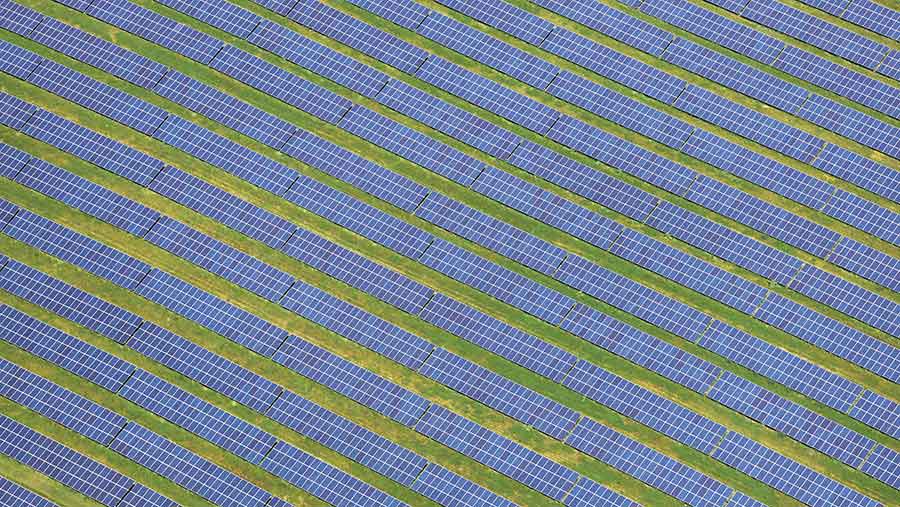Opinion: Where to put solar generation is the key question
 © Adobe Stock
© Adobe Stock “How much solar is enough?” That was a question I posed at a recent Farmers Weekly Question Time event at Rothamsted.
The answer isn’t a number. In fact, the answer is that I was asking the wrong question.
As with most markets and especially those associated with farming, the issues aren’t so much about a lack of supply.
In reality, the challenges are of matching the peaks and troughs of supply to variations in demand.
See also: Opinion – Future famers must be able to wear many hats
For example, the world has ample food, but it is neither geographically nor equally distributed across the seasons.
The economics of solar in the UK – those of production, distribution and consumption – are even less aligned.
There are high demand at periods of low supply, and vice versa.
By way of an example, on the summer solstice last year, UK energy demand was 31.1 gigawatts (GW), of which 32.6% was provided by gas, 24.6% by solar and 6.3% by wind power.
However at winter solstice, the load can be upwards of 45GW – but seldom is more than 3-4% of that energy from renewable sources.
One could be excused for assuming that the more solar we have, the more we can meet that winter demand. Not so fast.
There needs to be sufficient grid capacity to distribute that energy around the country and an ability to store excess supply.
This is why many large solar farms are being proposed where there is access to existing power plant infrastructure.
Solar isn’t a particularly controversial subject per se. This was perfectly illustrated at a breakfast meeting of local Harpenden residents that I was asked to speak at recently.
Hands up those who support solar. 80% of the room raised their hands. What about on the roofs of new houses or commercial roofs, currently clothed in composite panels? A nearly unanimous raising of arms.
And was there support for ground-mounted solar? A lukewarm endorsement, maybe 50%.
“What if there were 50,000-100,000 acres of large-scale solar in the planning pipeline?”, I asked. A large intake of breath and a shake of the heads.
The government’s aim is to increase the UK’s solar capacity to 70GW by 2035 up from 14GW.
In its Powering Up Britain report of March 2023, it has suggested solar capacity will need to hit 90GW by 2050 to align with wider net-zero targets and satisfy the demand of electric vehicles, cloud storage and heat pumps.
This solar ambition has attracted interest from investment houses on both sides of the Atlantic.
Field-scale solar projects in excess of 50MW are not submitted to local authority planning departments.
They are classed as nationally significant infrastructure projects (NSIPs), so the decision whether or not to grant permission lies with the secretary of state.
If granted, other consents such as planning permission are not required.
Large-scale solar is no longer just something for an underperforming 50 acre field behind the woods, out of site.
There are currently 31 solar farms in the UK submitted under NSIP (meaning they have upwards of 50MW or 250 acres), with some as large as 2,000 acres.
Unsurprisingly, with yields up to £1,200/acre index-linked for 40 years, landowners are finding approaches from investors irresistible.
However, there are an estimated 2.5 billion square meters of south-facing commercial roof space in the UK, which could apparently support over 400GW of solar power.
In the midst of a climate and nature crisis, asking “Where should we build our solar?” may be a better question.

